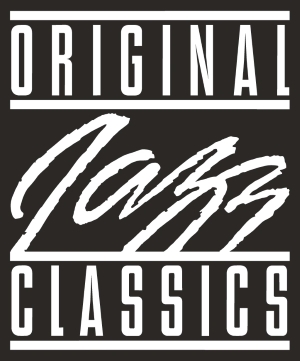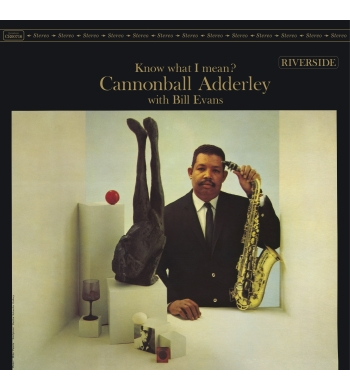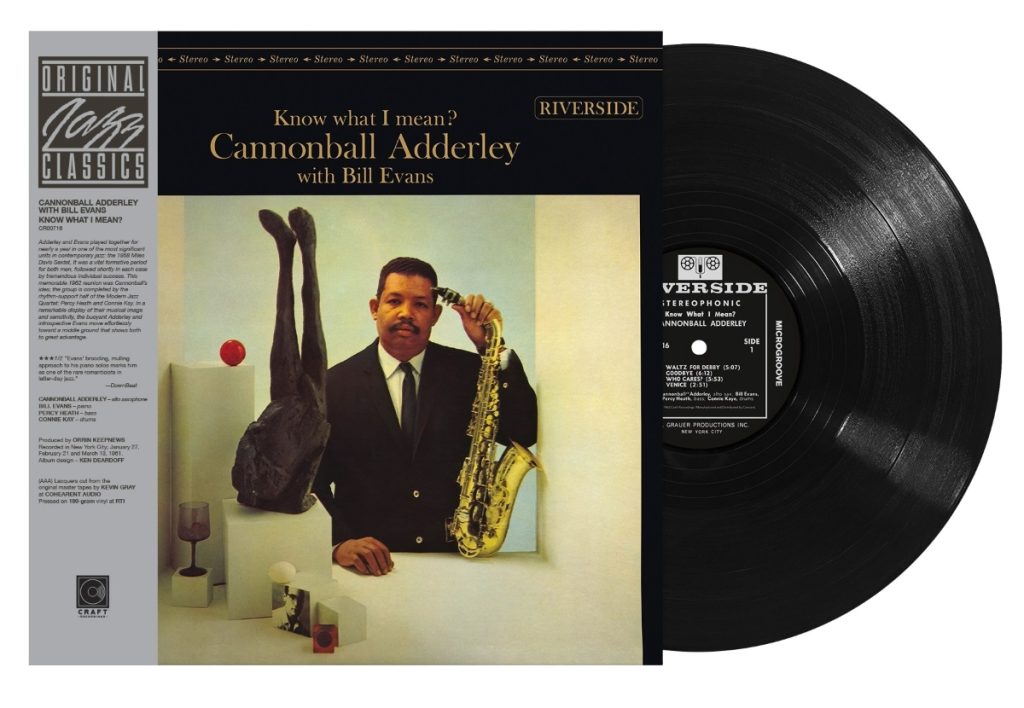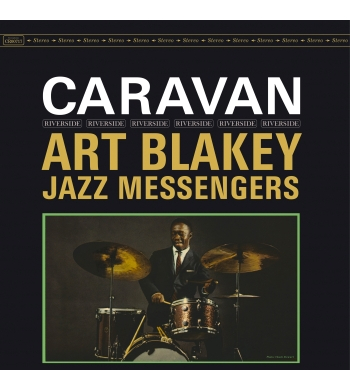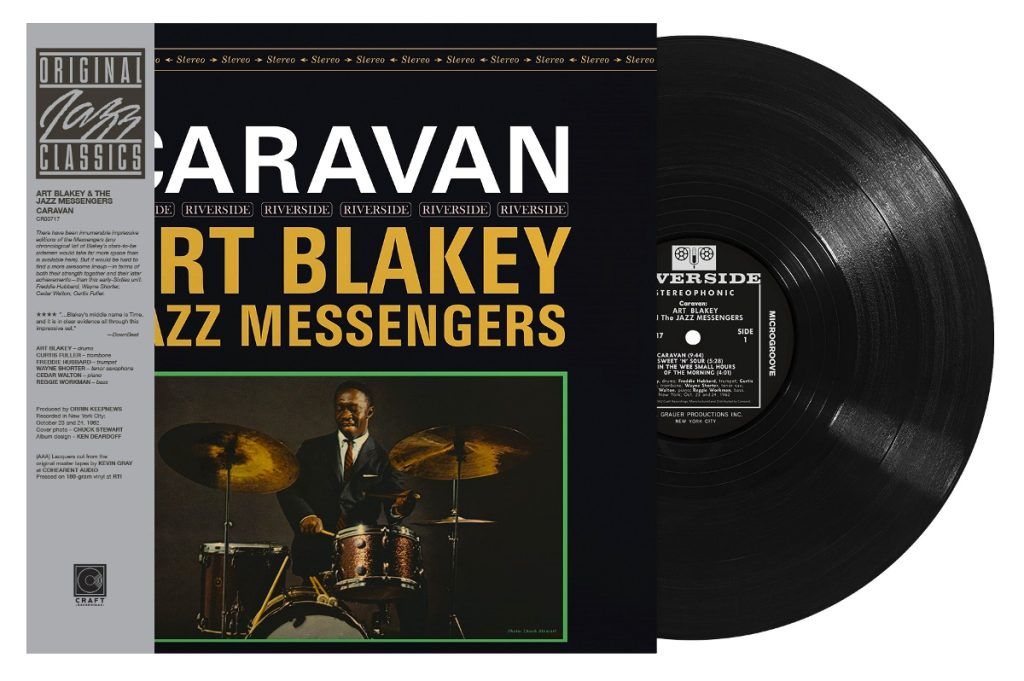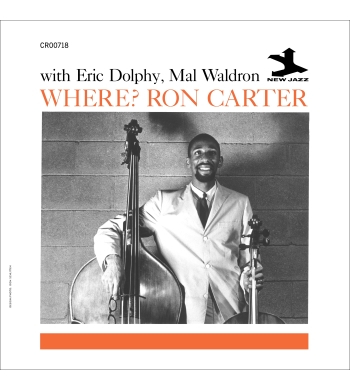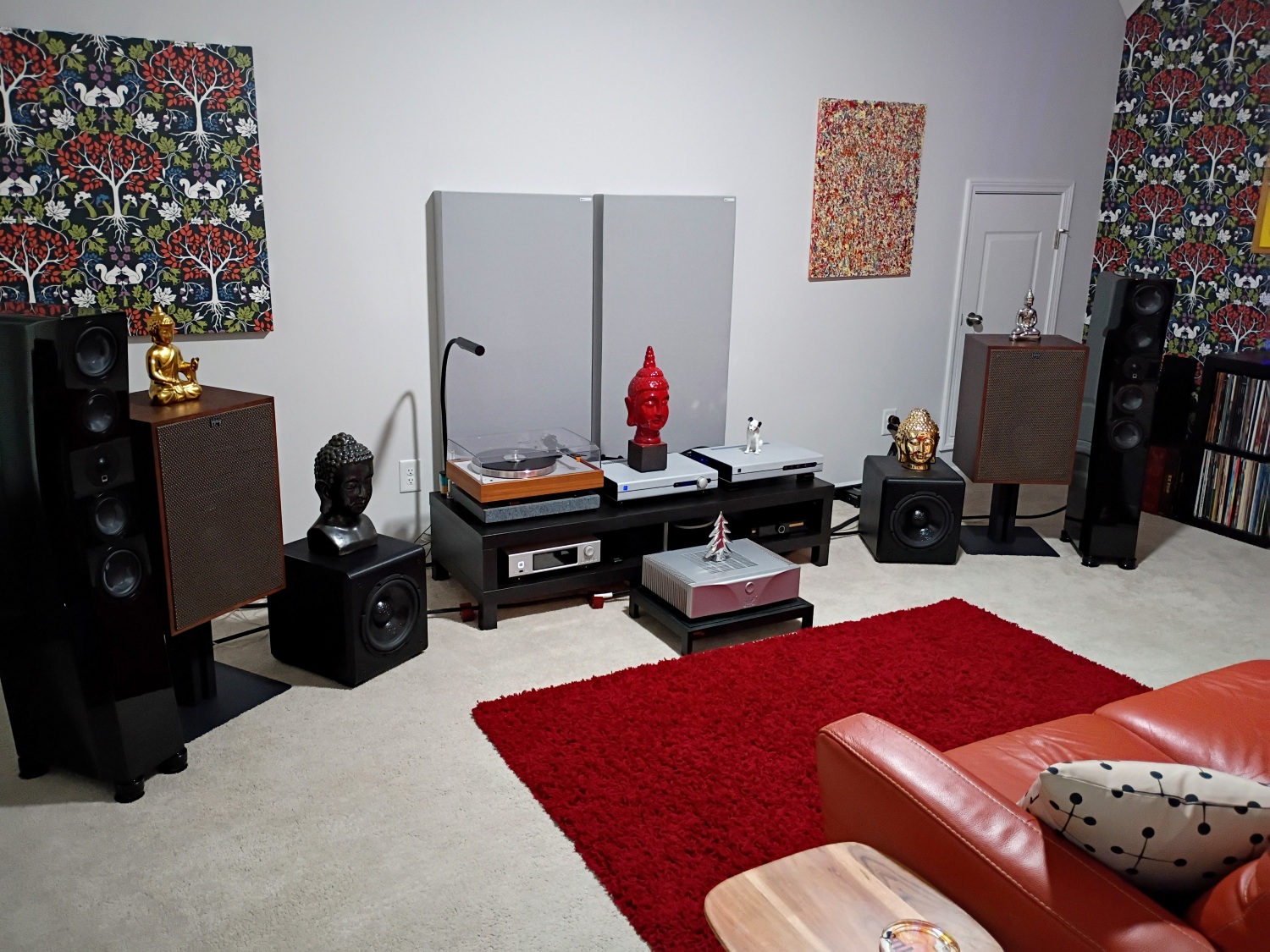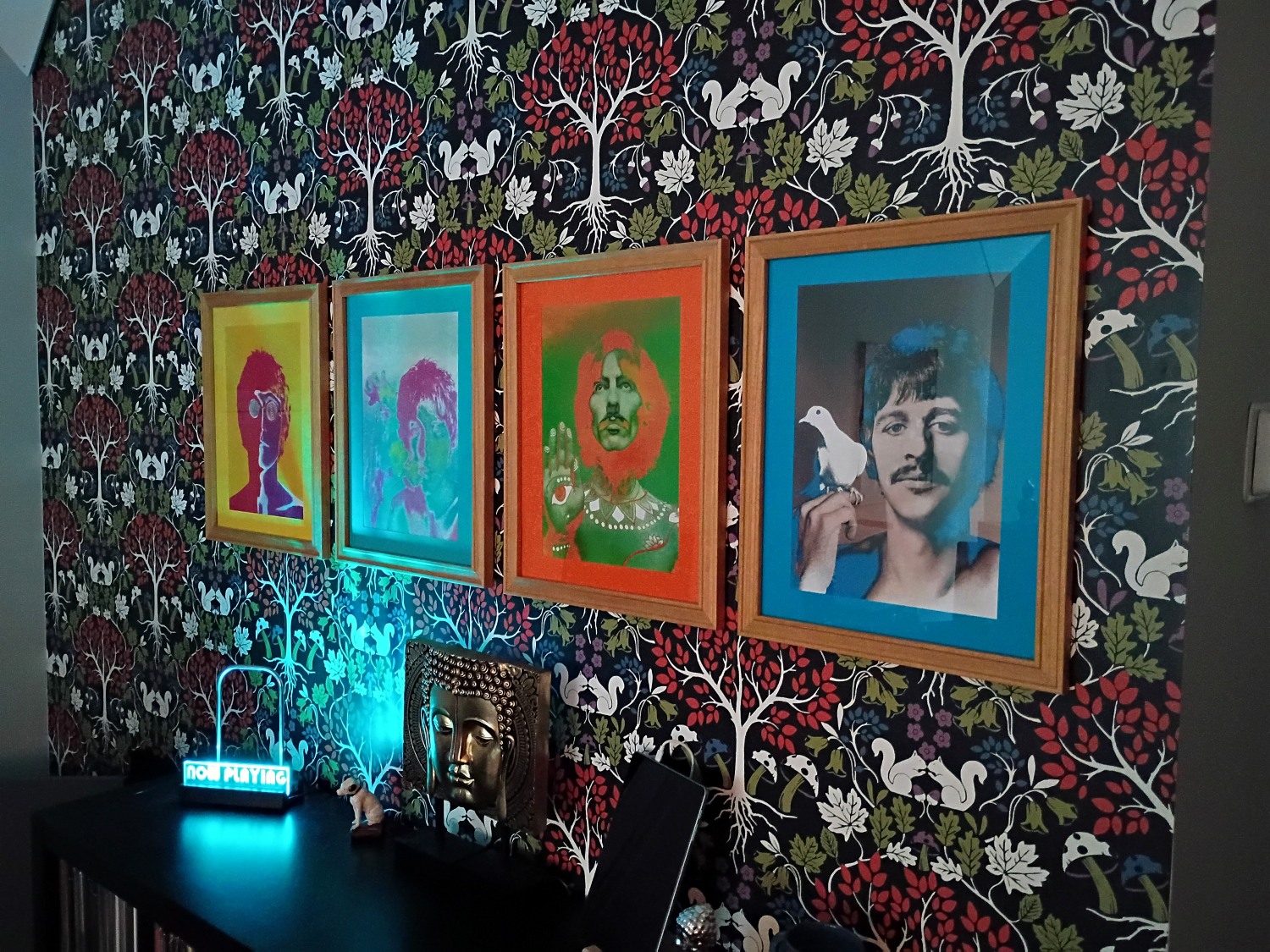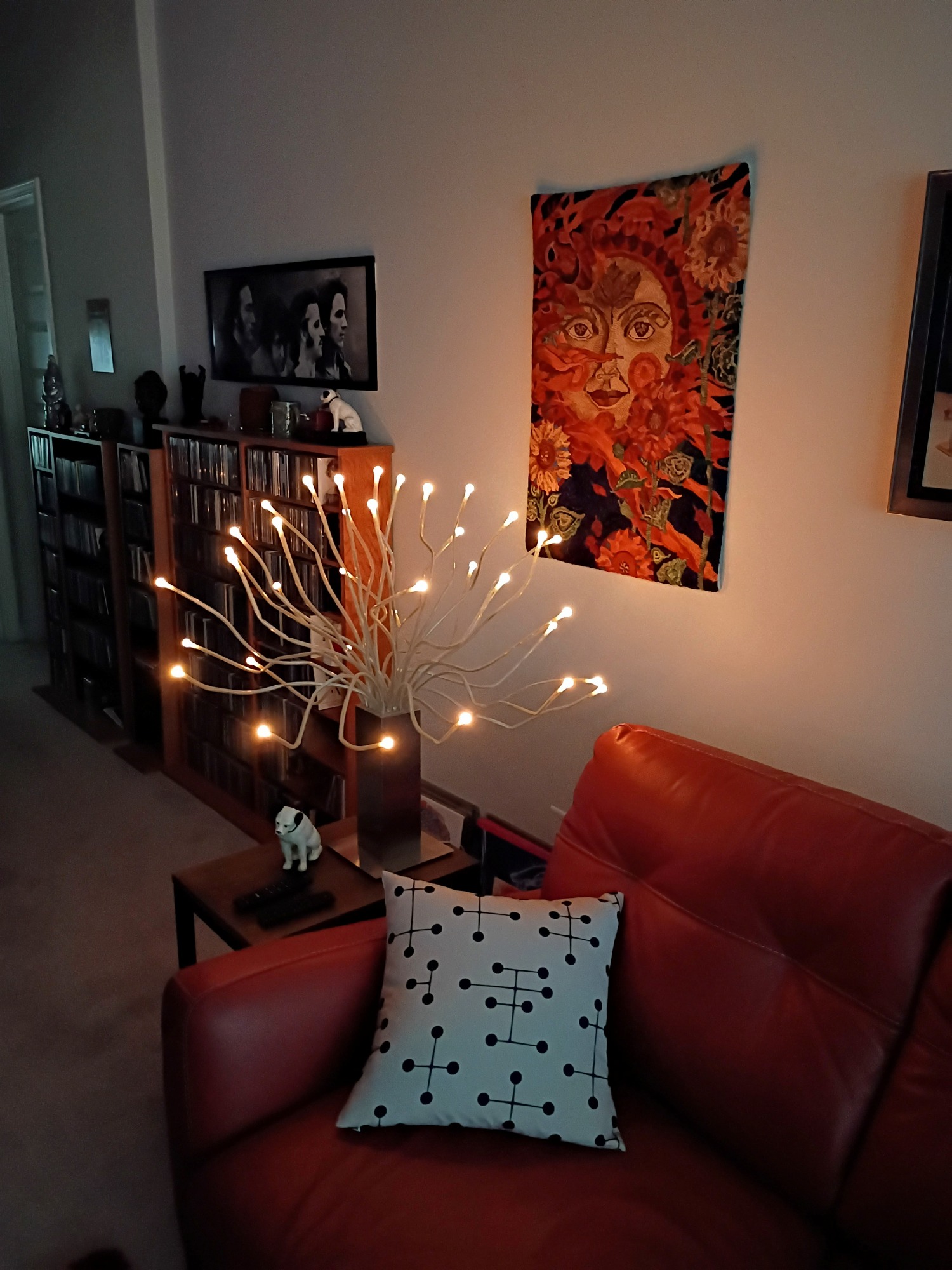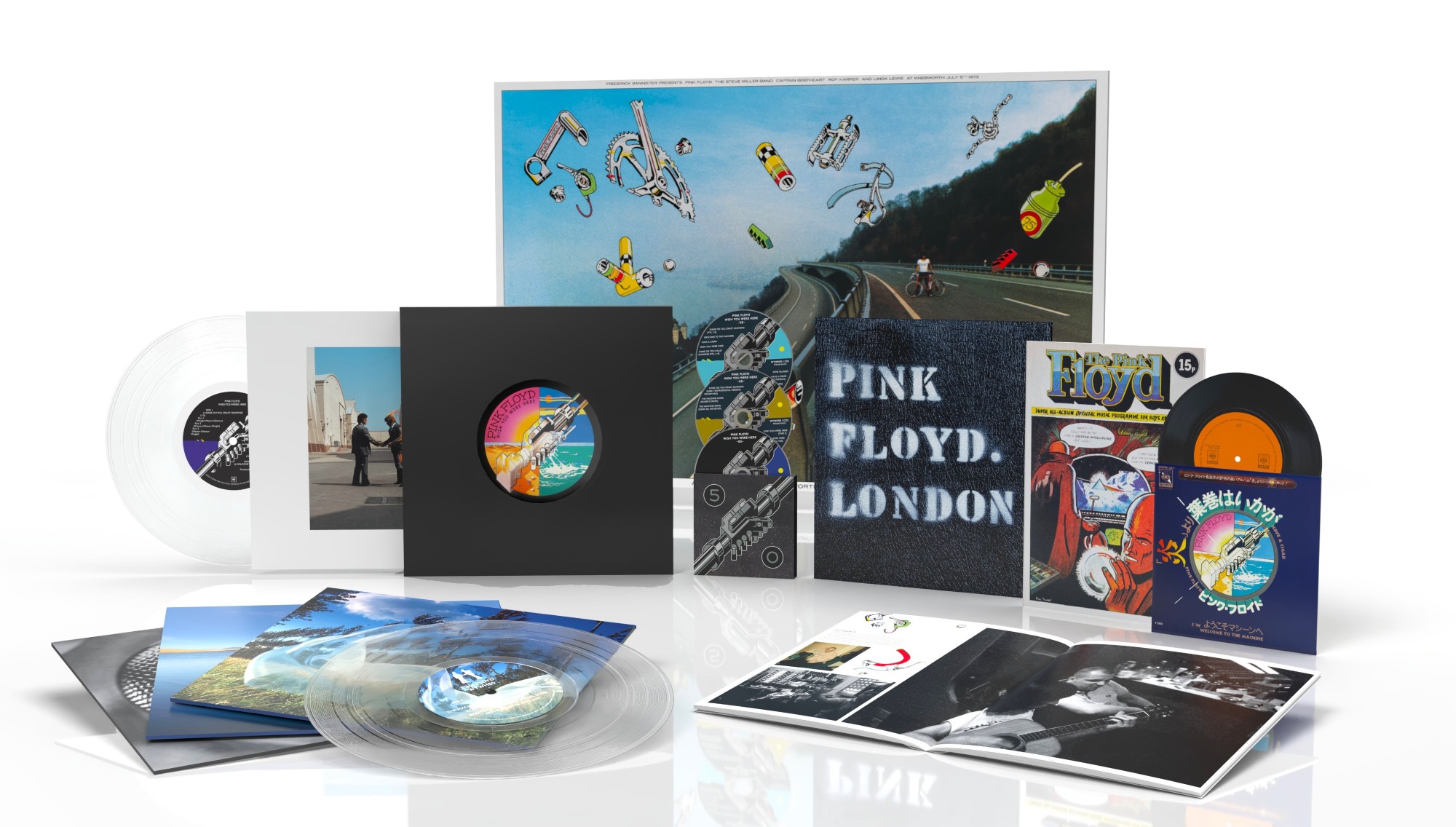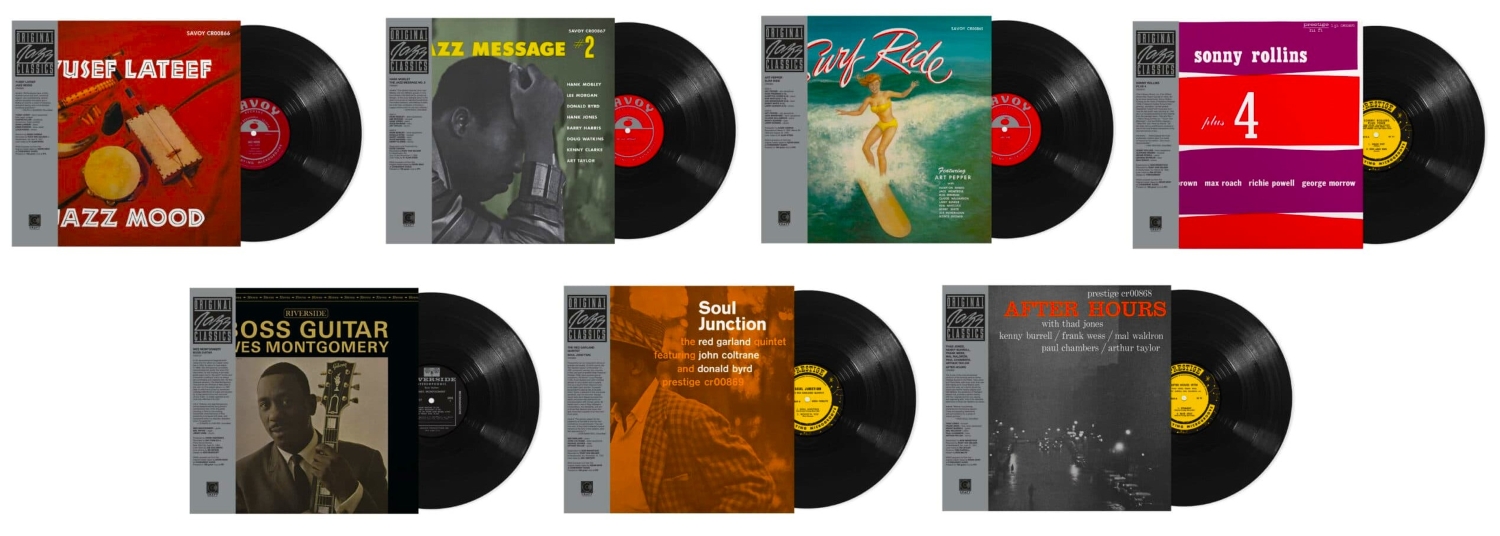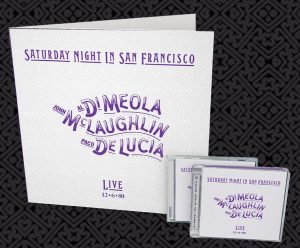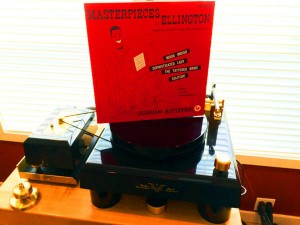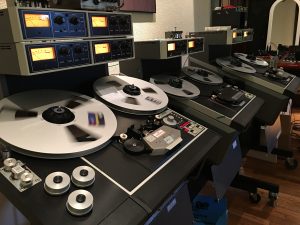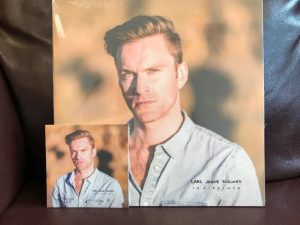Craft Recordings has announced the first group of new titles for 2024 in their Original Jazz Classics (OJC) reboot, featuring three albums that were released within months of each other in 1962. Those include the classic Cannonball Adderley with Bill Evans session, Know What I Mean?, along with the equally classic Art Blakey & the Jazz Messengers record, Caravan (both on the Riverside imprint), and bassist extraordinaire Ron Carter's debut album Where? (on the New Jazz imprint). These titles have mostly been out of print domestically for decades; Know What I Mean? has only been available as a 2003 Analog Productions 45 rpm release that currently sells on Discogs for just shy of $400. Otherwise, it's been absent as an LP for 40 years. Same thing with Art Blakey's Caravan, which was released in the mid-2000's as a Newbury Comics colored vinyl exclusive. Along with a crazy-expensive 2009 Analog Productions 45 rpm release; otherwise, it's been out of print as an LP for over 40 years. Ron Carter's Where? has been out of print as an LP since 1990's OJC release, and Discogs copies rated only VG go for over $50. Considering the impressively good quality of the Craft Recordings OJC titles thus far, that makes the $39 MSRP of these new LPs an amazing bargain!
New lacquers for these reissues were cut from the original analog tapes by Kevin Gray at Cohearent Audio, and the all analog, AAA LPs were pressed on 180-gram vinyl at RTI. All OJC LPs are housed in near-perfect replicas of the original tip-on outer jackets; their crisp artwork was sourced from Fantasy's vaults, and each album jacket also features a really cool custom OBI strip. LPs arrive inserted into rice paper inner sleeves, which helps keep them free from paper dust and guards against scratches. The excellence of the packaging with these reissues adds significantly to their desirability to collectors. High resolution 24-bit/192kHz digital downloads are also available for purchase or can be streamed on most major online services. All three albums can be pre-ordered HERE, and will also be available at online retailers or your local independent record store.
Cannonball Adderley with Bill Evans, Know What I Mean? 180 Gram Riverside LP, $39 MSRP
Cannonball Adderley's Know What I Mean? reunites him with Bill Evans for the first time since their appearance as part of Miles Davis' classic sextet on the album Kind of Blue. This record, Know What I Mean?, was intended to highlight the excellent alto sax work of Adderley, with Bill Evans' piano in a strictly supporting role—as much as one could possibly limit Bill Evans' presence to the background! The album's front cover features a shot of Cannonball, with a very small picture of Bill Evans tucked away underneath the statue that's also in the shot. In addition to the two principal players, Percy Heath appears on bass, along with drummer Connie Kay—they were both longtime members of the Modern Jazz Quartet. The album was produced by Orrin Keepnews for Riverside Records, and was recorded in New York at Bell Sound Studios over a period of three months in early 1961; the record was engineered by Bill Stoddard of Bell Sound.
Know What I Mean? highlights a number of originals, as well as including several standards for good measure. Bill Evans' by now classic "Waltz for Debby" opens the album in a much more swinging version than Evans' original that highlights Cannonball's alto; Evans also contributed the record's closer, "Know What I Mean?", which is a poignant offering with superbly lyrical solos from both Bill Evans and Adderley. Additional originals include John Lewis' (of the Modern Jazz Quartet) "Venice," with a nice bass intro from Percy Heath; there's also Clifford Jordan's rollicking "Toy," where Cannonball swings nicely while Connie Kay pounds the skins in perfect unison. Standards fill the album's remaining runtime, including Gordon Jenkins' (best known for his classic "Star Dust") evocative "Goodbye"; Bill Evans' solo here is a clinic in thoughtful, expressive piano playing. It's followed by George and Ira Gerswin's "Who Cares?" which was popularized by the likes of Ella Fitzgerald, Judy Garland, and Tony Bennett, and gets a spritely uptempo reading here. Bill Evans superb work at the keyboard really shines on a tune he covered repeatedly throughout his career, Earl Zindars' "Elsa;" and Cannonball's lyrical solo is perfectly apropos for a tune typically heard in a piano trio setting. The album's final cover is a lilting version of the Van Heusen/Silvers gem "Nancy (with the Laughing Face)", where Cannonball offers another perfect solo that's bookended by an equally lyrical turn from Evans.
Art Blakey and the Jazz Messengers, Caravan. 180 Gram Riverside LP, $39 MSRP
Drummer Art Blakey and the Jazz Messengers existed in some form over a 35-year period starting in 1954 and up until Blakey's death in 1990. The Jazz Messengers historically have represented dozens of the biggest names in jazz music over those three-plus decades, featuring artists as diverse as Horace Silver, Lee Morgan, Wayne Shorter, Wynton and Branford Marsalis, McCoy Tyner, Keith Jarrett, and Chick Corea—the list just keeps going and going. 1962's Caravan found the Jazz Messengers in a state of transition; the departure of Lee Morgan and Bobby Timmons to pursue solo careers forced Art Blakey to shake up the lineup, which now featured Freddie Hubbard on trumpet, Curtis Fuller on trombone, Wayne Shorter on tenor sax, Cedar Walton on piano, and Reggie Workman on bass. With, of course, Art Blakey behind the drum kit. The album was produced by Orrin Keepnews for Riverside Records, and was recorded over a period of two days in October, 1962, at Plaza Sound Studios in New York by engineer Ray Fowler.
Caravan is a mix of standards and originals, with classic tunes like Duke Ellington's eponymous title track, which opens the album. Blakey's intense drum intro is soon complemented by Cedar Walton's excellent work at the keyboards, and the horns blare in to carry the melody throughout; there's plenty of room for everyone to solo all around. Curtis Fuller's perfect trombone solo sets the mood for a pastoral reading of the James/Elliott chestnut "In the Wee Small Hours of the Morning." Freddie Hubbard's lyrical trumpet trades solos with Wayne Shorter's sax in the Hoagie Carmichael/Johnny Mercer perennial "Skylark." Wayne Shorter contributes a pair of originals; "Sweet ‘n' Sour" is the perfect vehicle for the sextet, and sets the template for the brilliance of his compositional style and playing over the next five decades. Shorter's "This Is For Albert" is a laid-back tune that features an eight-minute run time, and offers ample opportunities for everyone to stretch out. The album's closer, "Thermo," was penned by trumpeter Freddie Hubbard, and features some superb blowing by the trio of horns.
Ron Carter, Where? 180 Gram New Jazz LP, $39 MSRP
Michigan bassist Ron Carter actually started out playing the cello; he graduated from the Eastman School of Music with a B.A. (1959) then quickly achieved his Master's Degree from the Manhattan School of Music (1961). Somewhere along the line, he picked up the bass, and that soon became his predominant instrument from that point. Carter got his start with drummer Chico Hamilton in 1959; he played in that ensemble with multi-instrumentalist Eric Dolphy, and it was on Dolphy's classic Out There (1961, Prestige Records) that he made his recorded debut. Along the way, he also played brief stints with Thelonious Monk, Cannonball Adderley, and Randy Weston, but eventually gained much renown as an integral part of Miles Davis' second great quintet from 1963-1968. His early experience with Dolphy encouraged him to record his debut album, Where?; Ron Carter plays both bass and cello, Eric Dolphy supplied alto sax, clarinet, and flute, Mal Waldron played piano, and Charlie Persip was behind the drum kit. On three of the album's tunes, where Carter plays cello, George Duvivier fills in on bass. Where? was recorded on June 20, 1961 at the Van Gelder Studios at Englewood Cliffs, New Jersey; Rudy Van Gelder engineered the record, and Esmond Edwards served as producer.
Where? is a mixture of Ron Carter originals, a pair of tunes from his associate Randy Weston, and a couple of standards for good measure. The album is unusual in that Ron Carter leads the main theme on several of the album's tunes with his bass; yes, he's the leader and it's his album, but that was a less-than-common occurrence at that point in classic jazz. The album opens with back-to-back Ron Carter originals; "Rally" features Carter on cello leading a trio with George Duvivier on bass and Eric Dolphy on bass clarinet—which makes for a strikingly original intro to the tune. "Bass Duet" features both Carter and Duvivier on bass, and when Mal Waldron appears it's magical; his perfectly tasteful pianisms don't dominate the tune, but they definitely serve as the icing. Carter again leads on Oscar Hammerstein's "Softly, As In a Morning Sunrise," and is followed by a superb alto solo from Eric Dolphy; the highly underrated Mal Waldron provides truly sympathetic accompaniment on the piano. Waldron's piano opens Randy Weston's "Where" and again we hear Carter's cello accompanied by Duvivier's bass in a very subdued setting. Sy Oliver's " Yes, Indeed" is a more upbeat number that again features both cello and bass, with very nice fills on flute from Eric Dolphy. The album closes with another Randy Weston original, "Saucer Eyes," which finds Dolphy's flute carrying the main theme with Waldron's excellent keyboard work; as the theme repeats, Dolphy, Waldron, and Ron Carter solos bring the album to its conclusion.
Craft Keeps the Great OJC Titles Coming!
You can see the equipment I used to evaluate these classic LPs along with all the equipment in my dual systems by clicking on my name in the header. The LPs were played on my all analog system that features a twin turntable setup, which allows for playback of stereo LPs as well as dedicated playback of mono LPs. As the current crop of releases were all stereo versions, I used my ProJect Classic turntable that's fitted with an Ortofon Quintet Bronze MC cartridge, and that played into my new PS Audio Stellar phono preamp. The combination tracked the perfect pressings effortlessly, with nearly silent backgrounds and no appreciable groove noise. Unfortunately, I didn't have any originals or OJC pressings on hand for comparison, but in every instance where I have been able to make comparisons in this new series, the reissues have offered a vast improvement in sound quality over the originals. Craft seems dedicated to making the quality of these reissues one of their top priorities!
All three albums in this batch are superb; for whatever reason, I was perhaps expecting the Art Blakey LP to be the weakest link, and I‘ve been consistently blown away by not only the almost reckless performances by the Jazz Messengers, but also by the stellar sound quality! It definitely gets my vote for best of the bunch this go around, which I felt certain I'd give to Cannonball and Bill Evans. Go figure! And Ron Carter's Where?—which I had no expectations for—continually surprised me with its entertaining goodness and unusual instrumentation. Of course, why should I have been surprised, I mean, Rudy Van Gelder was at the controls!
Craft Recordings continues to remain on a roll with this excellent reissue series. The RTI pressings had beautiful, glossy surfaces that were free of defects and noise of any kind. Kevin Gray did a sterling job with the remastering process, giving us AAA albums that very likely exceed the sound quality of the originals as well as the OJC LPs from the Nineties. These classic LPs are very likely to sell out quickly, and will not likely ever appear with this superb level of all-around attention to detail and quality—all three come very highly recommended!
Craft Recordings
All images courtesy of Craft Recordings and the author.




